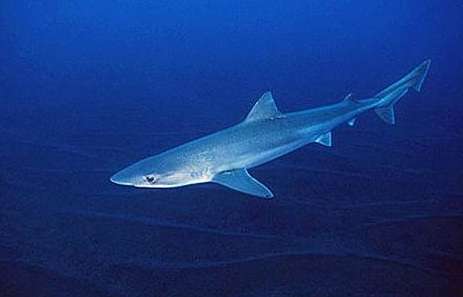Local fishermen in the Chubut Province of Patagonia, Argentina, accidentally caught three longnose sharks while fishing. The meat, fins and livers of this shark are marketable, so it has always been a popular species. Fishermen have been fishing extensively, causing it to be listed as a "critically endangered" species on the International Union for Conservation of Nature (IUCN)'s Red List of Threatened Species.

But in this area of Argentina, fishing for them is also illegal. , but basically they will not be held accountable, and the relevant departments will turn a blind eye. Of course this is very bad for animal protection, but this time I can only be thankful that the fishermen can still deal with these sharks, because when the fishermen opened the belly of one of the longnose sharks, a human arm was actually exposed inside.
The missing person in the belly of the shark
The fishermen hurriedly called the police and handed over the three longnose sharks and the remaining bodies to the police. Police found a tattoo on his forearm and wrist that matched that of a local man who had been missing since February 18. The media speculated that a shark had killed him, and panic spread.
But police and shark experts believe the man died before being eaten by the shark.
According to police investigations, the man was Diego Barria, a 32-year-old man living in the Chubut Province of Patagonia. The police found him on a nearby beach four days after he disappeared. His damaged ATV and his helmet, which was split in two, were found, but the lack of a body added to the mystery of the missing man's whereabouts.

Police suspect that Diego Barria may have been driving the car He died after colliding with a rock while riding his terrain vehicle, and his body was washed out to sea, where it was eaten by sharks. Because if he entered the water on his own, his car and helmet would not be so badly damaged.
The murderer is not a shark
BostonGregory Skomal, a university marine biologist and director of the Massachusetts Marine Fisheries Shark Project, also believes the likelihood that a longnose shark killed Diego Barea is very, very small.
The longnose shark is a medium-sized shark that can be found all over the world. The three sharks caught by the fishermen are all about 1.5 meters. They are bottom feeders, mainly feeding on flounder and sardines, but also Will target large fish and squid in the high seas.
Gavin Naylor, a marine biologist at the University of Florida who manages the International Shark Attack File (ISAF) at the Florida Museum of Natural History, also believes that the possibility of longnose sharks attacking humans is very small because humans are too It is too large to be the normal prey of this shark, and cases of this shark maiming humans are unheard of.

Therefore, both marine experts believe that the longnose fin shark inherits With opportunism, they used the remains of Diego Barea that sank to the bottom of the sea as food. There is good evidence that, when possible, many species of sharks choose to scavenge by scavenging food that has fallen on the seafloor, amounting to intermittent scavenging.